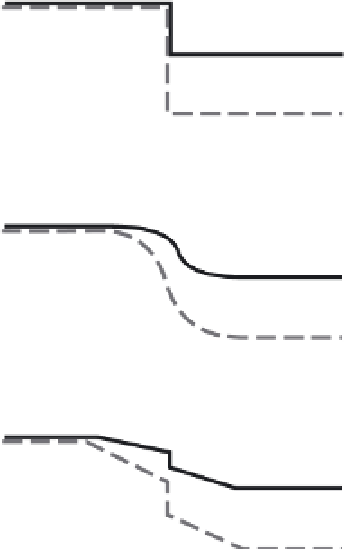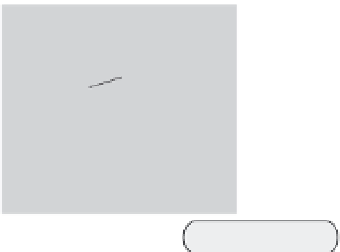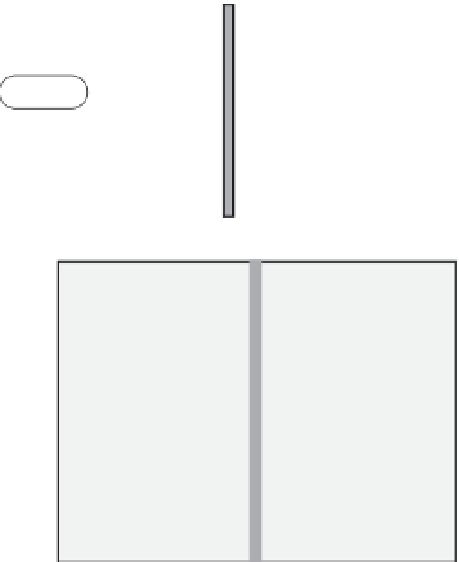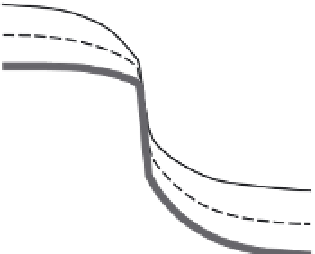Geology Reference
In-Depth Information
A
All slip occurs along discrete zone
Cross Section
t
0
D = 15 km
µ
L
µ
R
t
1
rigidity
Weak
Fault
slip at rate V
µ
F
t
2
4-km-wide
fault zone
of low rigidity
below 15 km
Slip distributed across
broader zone of shear
B
Map View
t
0
1
0.4
t
1
2
Strong
Fault
total
displace-
ment
5
t
2
0.0
µ
L
/ µ
R
= 1
Zone of discrete slip
µ
L
/ µ
R
= 2
C
µ
L
/ µ
R
= 5
t
0
-0.4
1
2
t
1
µ
F
/ µ
R
= 0.2
5
-0.8
t
2
40
-80
-40
0
80
Rotation
Distance from fault (km)
Zones of block rotation
Fig. 5.4
Relative velocity as a function of contrasts
in rigidity.
Patterns of strain across a fault.
V
is the rate of relative
motion between the two blocks, and
v
/
V
is the fraction
of the total motion (relative velocity) that is exhibited
by any point. The rigidity of the fault (
m
F
) is one-fifth
that of the right-hand block (
m
R
). The rigidity of the
left-hand block (
m
L
) is equal to, twice as great as, and
five times as great as that of the right-hand block for
the lines labeled 1, 2, and 5, respectively. In all cases,
most of the displacement occurs along the weak fault
zone. Note how the relative rigidity of the blocks affects
the shape of the displacement within each block. For
the highest rigidity (line 5, left-hand block), very little
deformation occurs within the rigid block. Modified
after Lisowski
et al.
(1991).
D
reference line
@ 0 years
0
20
40
60
80
100
t
0
array after 10 years
surveyed
positions
t
1
array after 20 years
Creep
t
2
0
20
40
60
80
100
Meters
Fig. 5.3
Conceptual models for deformation
associated with strike-slip faulting.
Displacement at three intervals, beginning with
t
0
, is
illustrated. A. Fault zone is very weak and is creeping so
that all motion occurs directly along fault. B. Fault zone
is relatively strong and strain is distributed across broad
zone on either side of the fault. C. Some creep occurs
on the fault, and rigid block rotations occur on either
side of the fault, taking up the additional motion.
D. Schematic results from an alignment array along a
creeping fault that is displaced about 80 mm in 20 years.
Modified after Sylvester (1986).
the relative rigidities of the blocks on either
side, whereas the relative proportion of the total
displacement that is accommodated along the
fault itself reflects its strength with respect to
adjacent blocks. Faults that are continuously
creeping will lead to lesser amounts of stored
elastic energy in the adjacent blocks, whereas
large earthquakes will be more likely to occur
along faults that are “locked” and are relatively
strong. Whereas the effect of differences in
along the fault zone and within the weaker
block (Fig. 5.4). Thus, the asymmetry of dis-
placement across a fault can be used to judge




















































































































































































